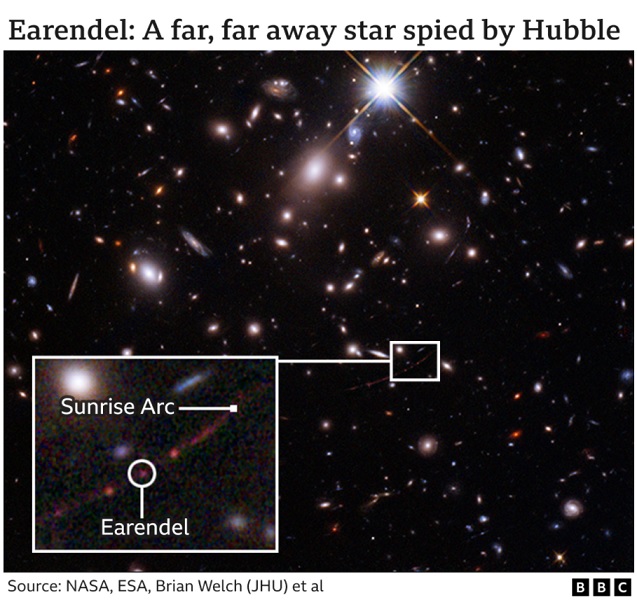
They've nicknamed it "Earendel" and it's the most distant, single star yet imaged by a telescope.
The light from this object has taken 12.9 billion years to reach us.
It's at the sort of distance that telescopes normally would only be able to resolve galaxies containing millions of stars.
But the Hubble space observatory has picked out Earendel individually by exploiting a natural phenomenon that's akin to using a zoom lens.
It's called gravitational lensing and it works like this: If there is a great cluster of galaxies in the line of sight, the gravitational pull from this mass of matter will bend and magnify the light of more distant objects behind.
Usually, this is just other galaxies, but in this specific case Earendel was in a sweetspot in the lens effect.

